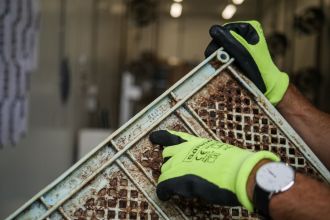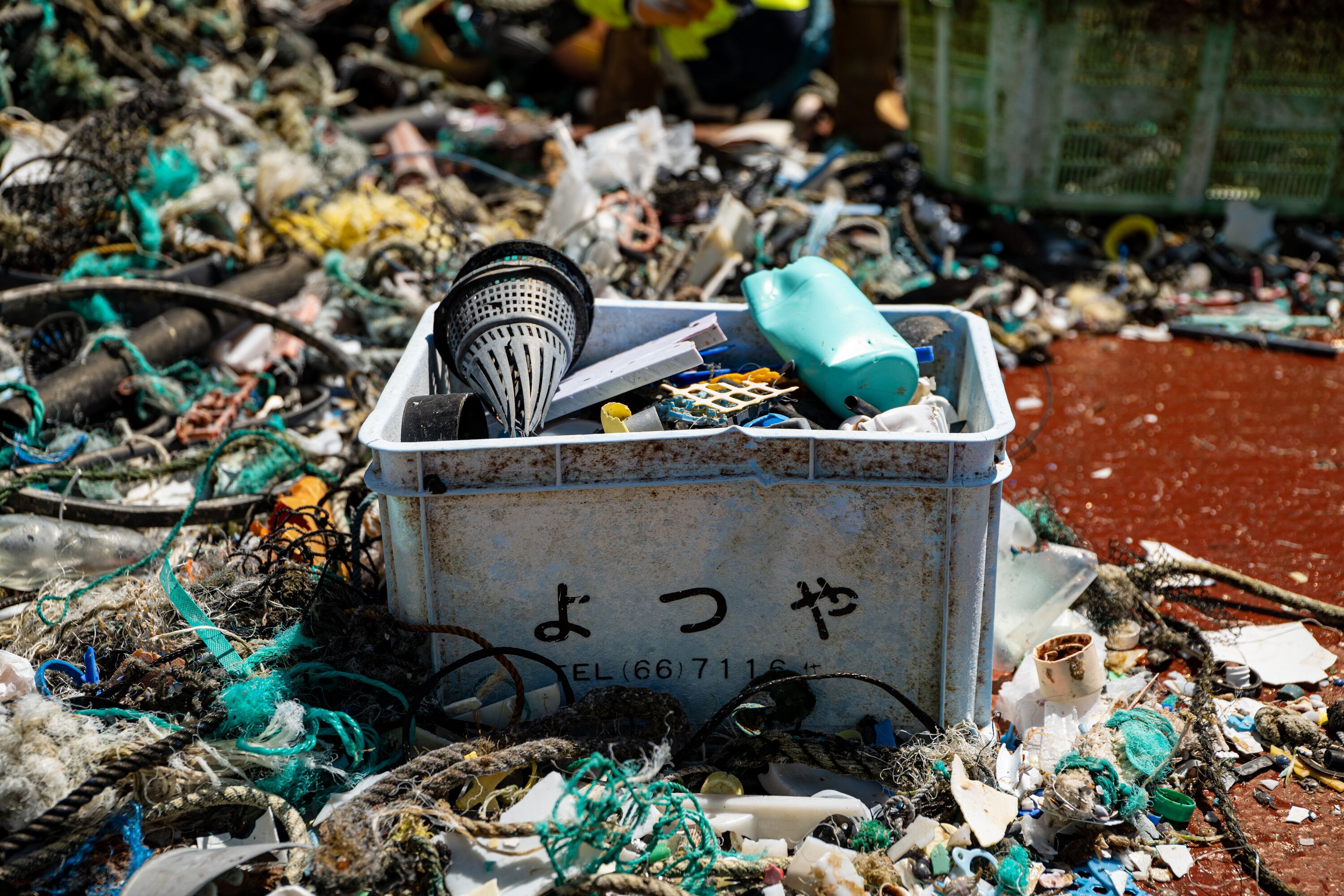Media release
From:
A small number of industrialised fishing nations are contributing the majority of floating plastic waste in the North Pacific Garbage Patch, reports a new paper published in Scientific Report. The findings highlight the important role fishing industries play in both contributing to and solving the problem of oceanic plastic pollution.
The North Pacific Garbage Patch (NPGP) is a large mass of plastics floating in the North Pacific subtropical gyre (a system of ocean currents). Previous expeditions have suggested that fishing nets, ropes and larger plastic fragments may form up to three quarters of the objects in the region.
Laurent Lebreton and colleagues analysed 573 kilograms of debris (consisting of 6,093 items larger than 5 centimetres) collected from the North Pacific subtropical gyre during an expedition between June and November 2019. The debris was collected from latitudes between 33.0 and 35.1 degrees North and longitudes between 143.0 and 145.6 degrees West. The plastic debris pieces were inspected for evidence of their country of origin, such as language, company name or logo. The authors also modelled how plastic debris may enter the ocean using ocean current data.
Although 33% of the debris were unidentifiable fragments, the second largest category of objects (26%) was fishing equipment such as fish boxes, oyster spacers, and eel traps. Plastic floats and buoys made up 3% of the objects, but accounted for 21% of the total mass. The authors report that, for the 232 plastic objects where the origin could be identified, 33.6% (78) were from Japan, 32.3% (75) were from China, and 9.9% (23) were from South Korea. A further 6.5% (15) of such objects originated from the USA, 5.6% (13) from Taiwan, and 7.3% (11) from Canada. The authors report that, according to their models, plastic debris in the NPGP was more than ten times more likely to originate from fishing activities rather than land-based activities. They note that most of the identified countries contributing to the plastic debris have industrialised fishing.
These findings highlight the need for transparency from the fishing industry and strengthened cooperation between countries to regulate waste management on board fishing vessels and monitor abandoned fishing gear in the oceans, according to the authors.
Multimedia






 New Zealand; Pacific
New Zealand; Pacific



